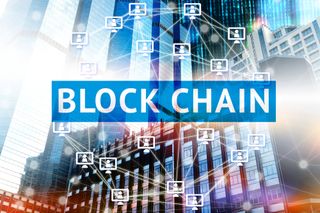Why the transportation sector needs data scientists

Connected vehicles are widely discussed as a way forward in the transportation industry. For both fleet management and individual drivers, IoT can revolutionize the way vehicles function, making for a safer driving experience. Real-time analytics offers predictive maintenance, so drivers are alerted to possible problems before a part breaks down. Sensors placed around cities that are then connected to apps can help drivers find parking spots faster, reducing traffic and emissions. About 30 percent of cars circling a city at any given time are looking for a parking spot, which means not only wasted time for drivers but unnecessary emissions for the environment. IoT can help make a better driving experience and help cities reduce traffic and improve the air at the same time. Honeywell’s IoT Connected Aircraft flew around the world last year to showcase how connectivity changes the way we fly. Not only does Wi-Fi provide a more pleasant in-flight experience for passengers, but IoT technologies enhance flight safety and efficiency as well.
Mastering Transformation in the Public Sector
Because public sector entities find it challenging to define the why—that is, to create a vision for a transformation effort and what it should achieve—and bring about concrete results, they too often focus their attention on designing new policies and planning for their implementation. The result is transformation efforts that fail because they lack buy-in from political and administrative leaders, employees, and citizens or because they fail to deliver on their promises. Such failures only fuel the skepticism about government that transformation is intended to overcome and make future successes more difficult to achieve. Further challenges arise from the complexity and enormity of the transformations that pubic sectors must undertake. First, whereas all corporate transformations set profits as the same ultimate goal, the objectives of a public sector transformation can’t be broken down as simply. Second, cities, provinces, and nations must engage a high number of citizens. These populations are of course much larger than a group of factory or division—and even companywide—employees.
Not Everyone Understands Digital Transformation

With stories about business transformation occurring all around us, we wanted to know exactly what people are thinking about the topic of digital transformation - not just CEOs and executives - but also employees. The results of the Salesforce Digital Transformation Survey highlighted that while 64% of people are aware that the company they work for considers digital transformation a priority, 69% say they wouldn’t be confident explaining the concept to somebody else. While businesses and brands understand digital transformation and talk about it regularly, our results shine a spotlight on a challenge that must be overcome. People know that digital transformation is happening around them, but don’t fully understand what it is. The benefits of digital transformation won’t fully realize until we work to close the “understanding gap” that exists among the general population. ... We have a definite challenge on our hands with approximately half of the respondents (52%) saying that they have little or no engagement with the process of digital transformation. Individuals must realize the purpose of changing the way they work, why they are re-skilling, and how new systems will make their lives easier and more efficient.
The democratization of data science with Dr. Chris White
“Big data,” much like “artificial intelligence,” are terms that are vague. In fact, they don’t mean anything. Neither big nor data. They’re not qualified. Just like artificial intelligence. And so that’s good and bad. You know, it’s good because there’s a movement. That movement has funding and interest from policymakers. It has the need for understanding implications. But that movement is still very large and very vague. And so, I think about big data, really, in terms of publicly accessible information, as a starting point, because that’s something that people are familiar with. They’ve all gone to a search bar. They’ve all issued a bunch of queries. They’ve all had a bunch of browser tabs open and had that familiar feeling of, gah, there’s just like a lot of information out there. How do I find what I need? How do I organize it? And when that problem is a business problem, it’s even bigger. And so, I think of it like that. Sometimes there’s images, like an iceberg, where what you see from a search bar, what you see if you did a Bing search for a product or a celebrity or an event, and you get a list of links and an answer card, they think of that as data interaction. And it’s true, but behind that there’s a lot more.
Blockchain – Can we trust you? What legal and cybersecurity risks lurk behind the hype?

The blockchain hype is a core component of the crypto-craze. The technology behind bitcoin is ingenious, and real-world businesses have invested in it order not to be left behind what some fear may be a disruptive technology. Harvard Business School Professors Marco Iansiti and Karim R. Lakhani see blockchain as a ‘foundational technology’, more like TCP/IP or email, which, whilst it will eventually affect most everyone, due to “barriers to adoption” and “sheer complexity”, the question is when. ... Many are pushing hard and we have seen the use-case in scenarios ranging from recording art provenance, to tracking inventory in global supply chains, evidencing the source of diamonds, recording music copyright, and tokenised ownership of natural assets in Siberia. An interesting use-case may come should Amazon issue is own digital currency, enabling customers to buy direct from Amazon (no banks or credit card companies involved at all – rather like store card points but stored on a blockchain), adding a new layer to the internet: a value-transfer layer. Many examples remain small trials, with most of the complexity still to be ironed-out.
Using Domain-Specific Language to Manipulate NoSQL Databases in Java
"A domain-specific language (DSL) is a computer language specialized to a particular application domain." The DSL has several books, and the most famous one from Martin Fowler says, "DSLs are small languages, focused on a particular aspect of a software system." That is often referred to as a fluent interface. In the NoSQL world, we have an issue, as the picture below shows. We have four different document NoSQL databases doing exactly the same thing, however, with different APIs. Does it make sense to have a standard do these habitual behaviors? In this article, we'll cover who does manipulation with Eclipse JNoSQL API. ... To manipulate any entity in all NoSQL types, there is a template interface. The template offers convenience operations to create, update, delete, and query for NoSQL databases and provides a mapping between your domain objects and JNoSQL. That looks like a template method to NoSQL databases, however, no heritage is necessary. There are DocumentTemplate, ColumnTemplate, GraphTemplate, and KeyValueTemplate.
Wysh launches its AI and human-powered concierge service after 2 years in stealth mode

The startup’s answer to the AI problem? Combining artificial intelligence and real intelligence in a single platform and building the solution on blockchain technology to provide transparency. Wysh provides instant communication between users and businesses through AI and blockchain technologies. This isn’t just about allowing businesses to engage with customers, though. The solution will also facilitate payments, which is why the company recently landed $2 million in a round led by Park Capital, a strategic investment firm focused on fintech. Wysh provides its digital concierge as an API to service providers. It combines AI technology with human concierges and customer service teams, recognizing automatically when a customer needs a real person to answer more complex questions than a chatbot alone can solve. “Wysh is B2B in terms of client acquisition strategy,” executive chair Alexander Lopatine told me. “We work with corporate clients to provide them the technology, allowing their customers to access their internal services through a chat interface.”
E-voting and DDoS concerns: The devil’s in the details
As for the misconfiguration of allowing traffic from outside of the Incapsula network to the origin server if the attackers know the IP address of the server, I’m glad this was brought up. This is an important part of proper onboarding to our services (blocking all traffic not coming from Incapsula ranges). Another attack scenario, according to the paper, would be if a malicious attacker injects malicious javascript as part of the javascript injections done by Incapsula. While this is true, it can also be said about any third-party JavaScript being loaded by web applications on the customer website, including a voting website (such as advertisements, analytics, monitoring and framework libraries). That’s why we take precautions to make sure that it doesn’t occur. Our environments are protected and audited, and any configuration change needs to be approved by multiple people in a process that is thoroughly tracked. Consequently, Imperva would know about a JS injection, even if the JS file remained in the same size.
Italian banks test blockchain for interbank reconciliations

First previewed in December, the new process will make bilateral channels available through which each counterparty can exchange information via a series of smart contracts providing real-time feedback on transactions passing over the network. ABI Lab is collaborating with NTT Data for development of the application and SIA as provider of the node infrastructure and verification process. SIA in November announced plans to set up a 600 node network for bank clients, government agencies and corporates to connect to blockchain apps developed by the R3 consortium. Banking co-operative Swift has been running its own proof-of-concept trials on the use of distributed ledger technology for nostro account reconciliation via Hyperledger Fabric v1.0 technology. While the PoC proved a resounding success, it threw up a number of significant operational challenges that would need to be addressed in advance of a commercial roll-out. By restricting use to national banks, the Italian experiment could overcome the issues of scale facing a global provider like Swift.
Is Your Product Roadmap Still Meeting Customer Needs?
Most companies diligently follow information about the state of their industry or technology, but the unfortunate reality is that it’s less common for companies to stay as closely attuned to their customers’ needs and experiences. To successfully scale a product, you must ensure that your roadmap isn’t just pointed towards the long-term vision, but that the initiatives and features on the roadmap are tied to your customers’ core needs. By consistently including customer research and validation in your product design and development process, you’ll have the insight, direction, and confidence you need to keep your roadmap flexible, while still driving towards the overarching vision. ... Most companies have no problem collecting quantitative data. It’s relatively quick and easy to implement any number of analytics solutions to give you visibility into what areas of your product customers are using the most, how frequently they’re logging in and what your churn rate is. These are valuable sources of data that can inform important decisions about your product, but these metrics don’t always tell the whole story.
Quote for the day:
"Just when you think it can't get any worse, it can. And just when you think it can't get any better, it can." -- Nicholas Sparks
No comments:
Post a Comment